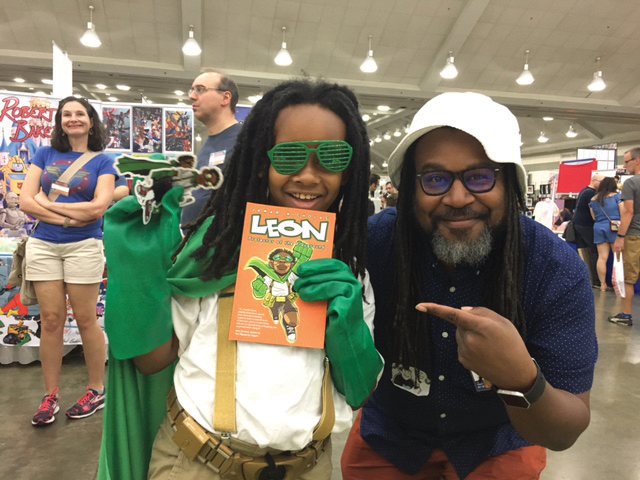The Power of Graphic Narrative
As a child, I fell in love with comic strips, their storytelling devices, and the unique qualities that separated them from one another: the odd but unmistakable inked “wings” on the sides of the head of Blondie’s husband, Dagwood; the unexplained mystery as to why Andy Capp’s eyes were hidden under his cap; the shaky but masterful line that created Peanuts’ Charlie Brown.
On this newspaper section, which my family called “the funnies,” lay universes where each comic creator ruled their own planet—each with a distinct signature style that helped them tell stories. All were different, but shared the same boundary. The four-panel prison created a problem that needed to be solved every day: What story could you tell inside four boxes? Every day? Without repeating or stopping?
I developed a laser focus on one “grown-up” goal for myself that came to light on the floor of my family’s West Philadelphia home: To draw newspaper cartoons and, later, comic books. I wanted to become a cartoonist.
Cartooning is a mode of storytelling that uses a marriage of words, pictures, timing, and symbols unlike other types of visual communication. To go a step further, cartooning is problem-solving, similar to how a billboard over a stretch of road must convey a concise message to a viewer in scant seconds. My job is to inform, sell, educate, or entertain the reader inside a limited space. That space could be the aforementioned four panels on a newspaper comic page, in a 24-page comic book, or through 120 pages in a graphic novel.
Before my time at Arcadia, I established a career for myself as a published author and cartoonist. I have spent more than 20 years in the public eye honing my craft, from an early start drawing weekly serial comic stories in newspapers; to a stint as editorial cartoonist at the Philadelphia Tribune, the nation’s oldest African American newspaper; to webcomics; to drawing a daily, full-color comic strip in Metro U.S. newspapers (concurrently running in Philadelphia, New York City, and Boston), which garnered four million readers each month.
I’ve also had the pleasure of working on projects that vary in tone, but have touched people in distinct emotional ways: In 2010, I adapted and illustrated Fist Stick Knife Gun: A Personal History of Violence (Beacon Press/Penguin Random House), a memoir of African American educator and activist Geoffrey Canada’s life growing up in 1950’s South Bronx, N.Y. This book has been covered as coursework in several college courses, including at Arcadia.
My newest creator-owned graphic novel, Leon: Protector of the Playground (2017, Kids Love Comics), tells the story of a sixth-grade African-American superhero defending kids in his school with only his common sense and quick wits to help him. I’ve been honored with several awards and mentions for these projects, most recently receiving the prestigious Dwayne McDuffie Award for Diversity in Comics.
The aforementioned examples, to me, show how, over the past 30 years, cartoonists and artists have elevated the graphic narrative to a medium that can tackle difficult, human subject matter. We’ve come a long way from the stereotypical POW! BAM! ZAP! disregard for comics. The medium is finally being shown as a mature storytelling tool.
Over the years, I’ve been tapped by Arcadia to use my cartooning as a campaign for the Knight, the University’s mascot. I’ve made a mini-comic for first-year student orientation (above), and created unique ink-and-brush character portraits for honorary degree recipients—quite an honor. That boyhood dream of wanting to connect with people through my art has been my best adult realization. I dedicate every one of my projects to those young people out there who have a strong urge to communicate to the world using their creativity. See you in the funny pages.
Jamar Nicholas serves as an administrative assistant for the Department of Visual and Performing Arts and Arcadia Exhibitions.


